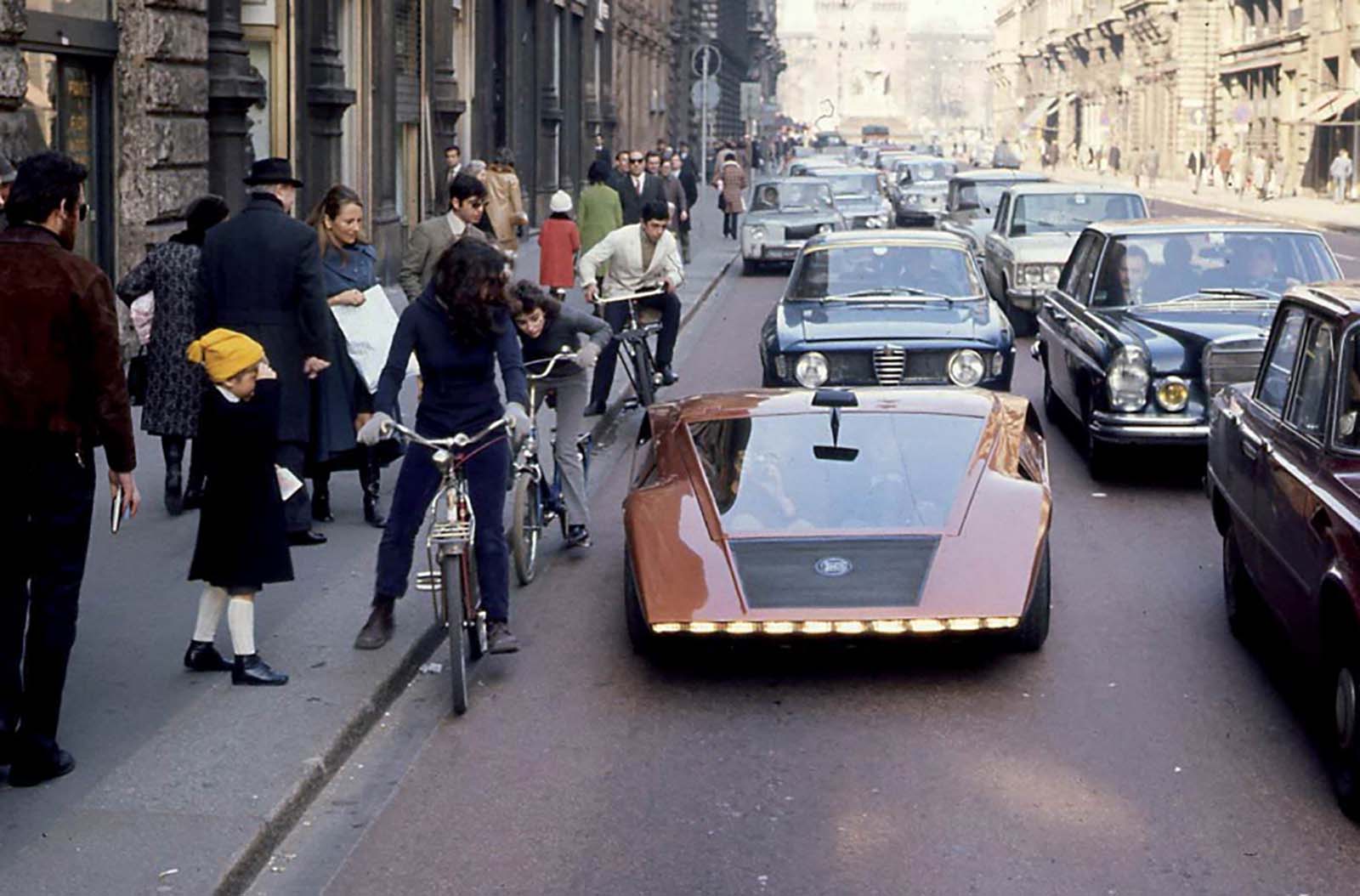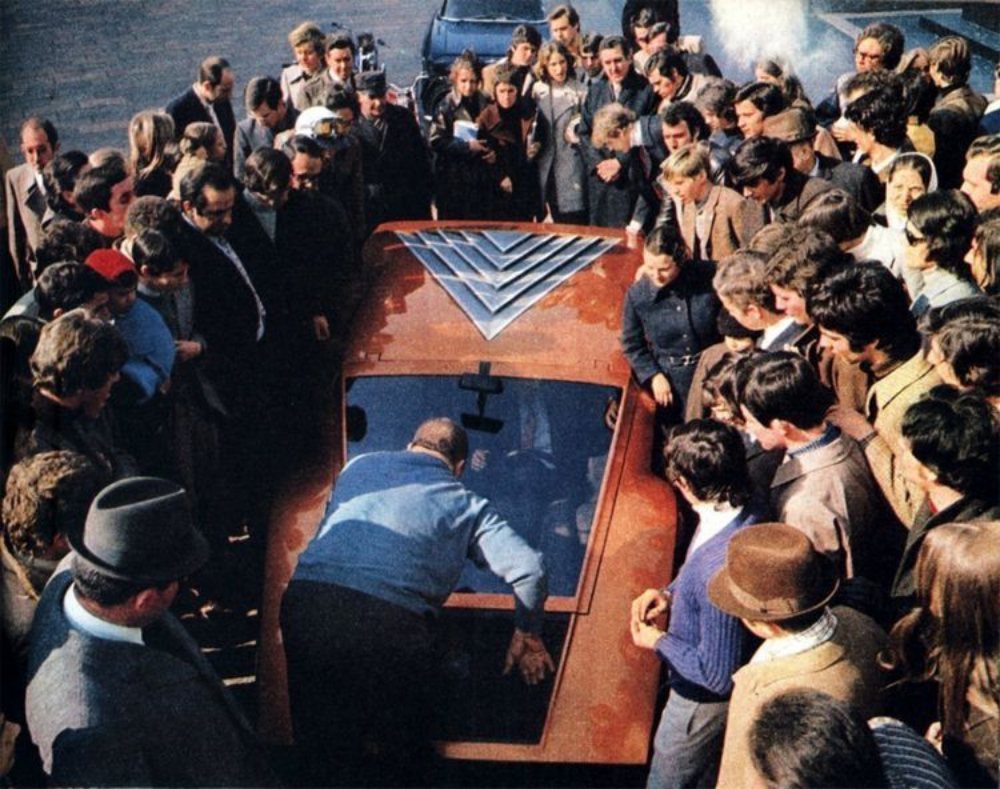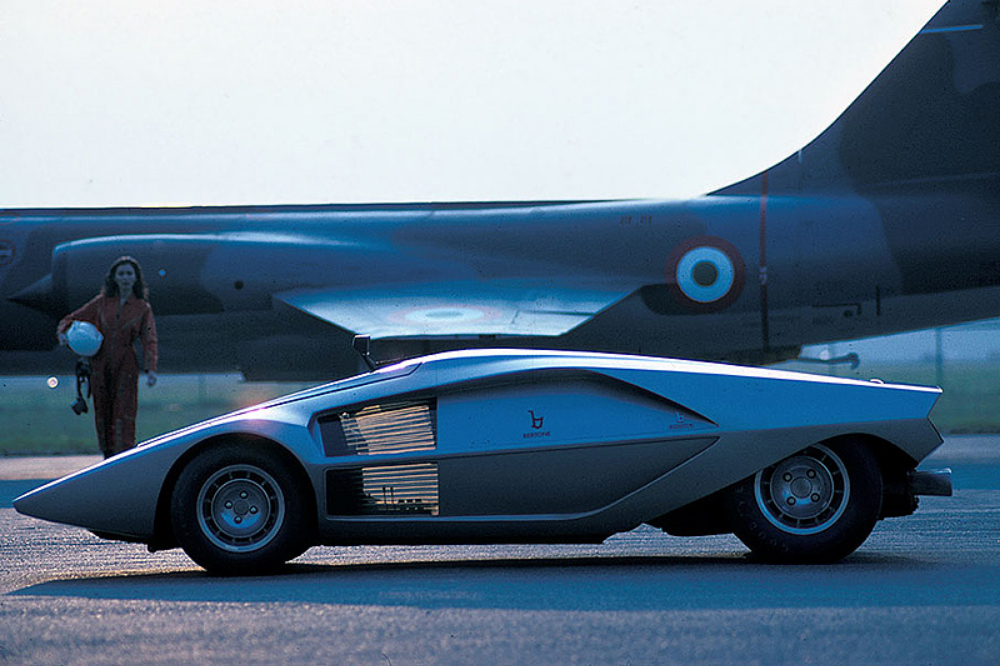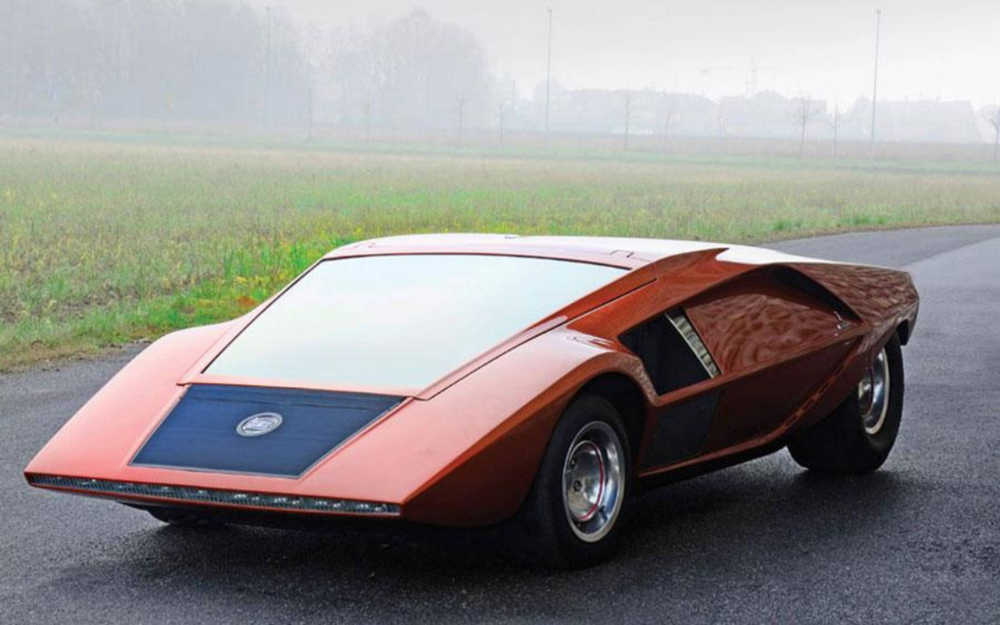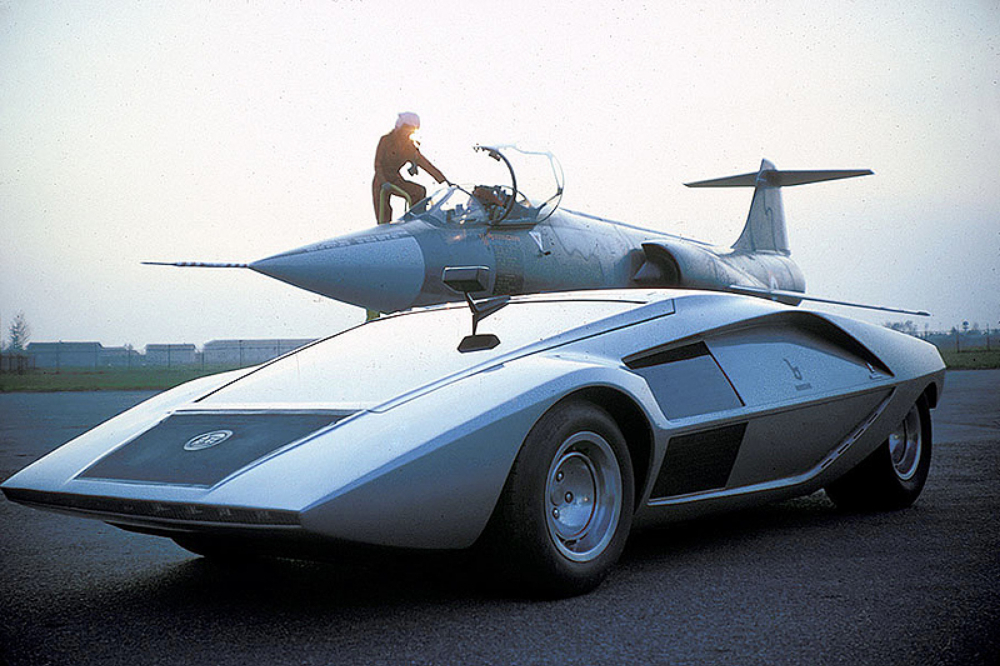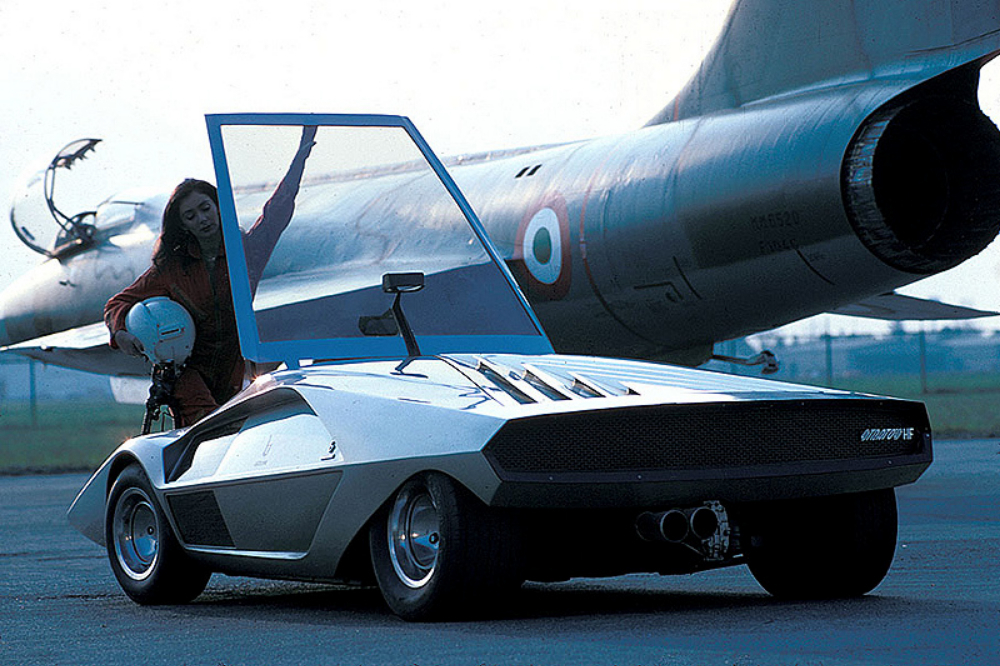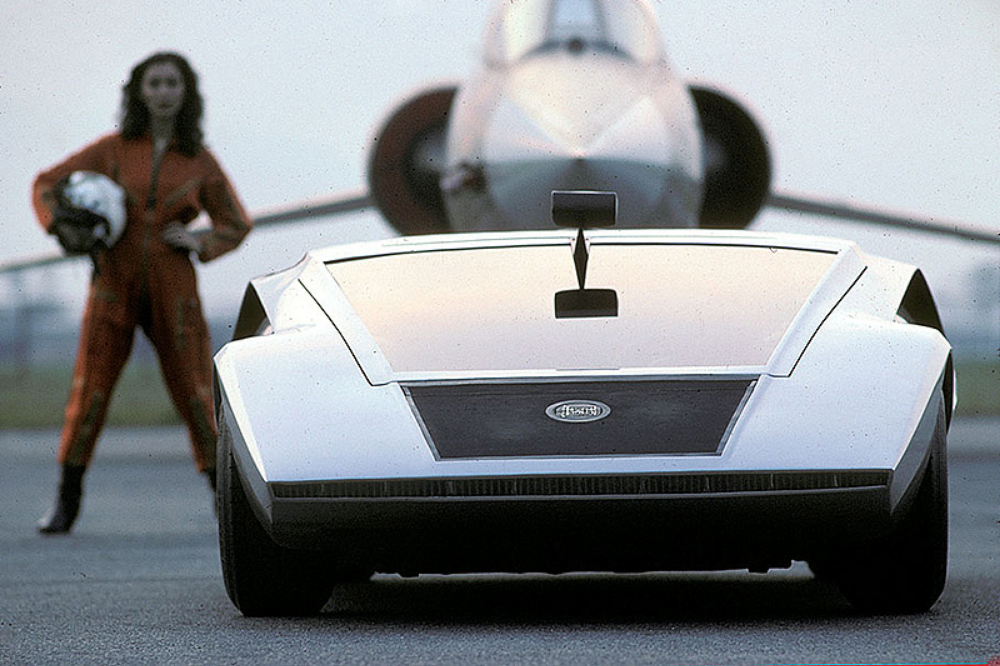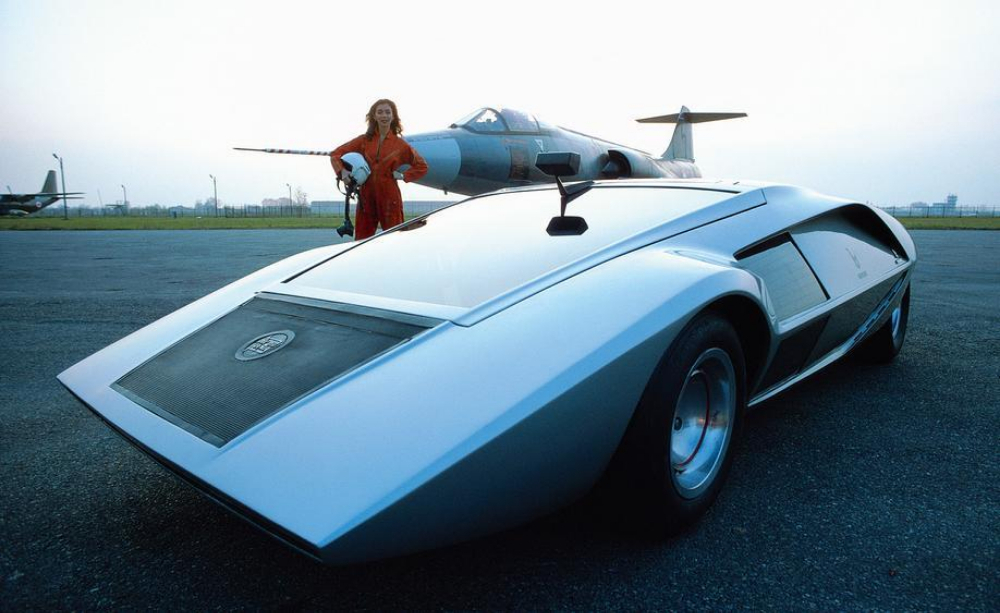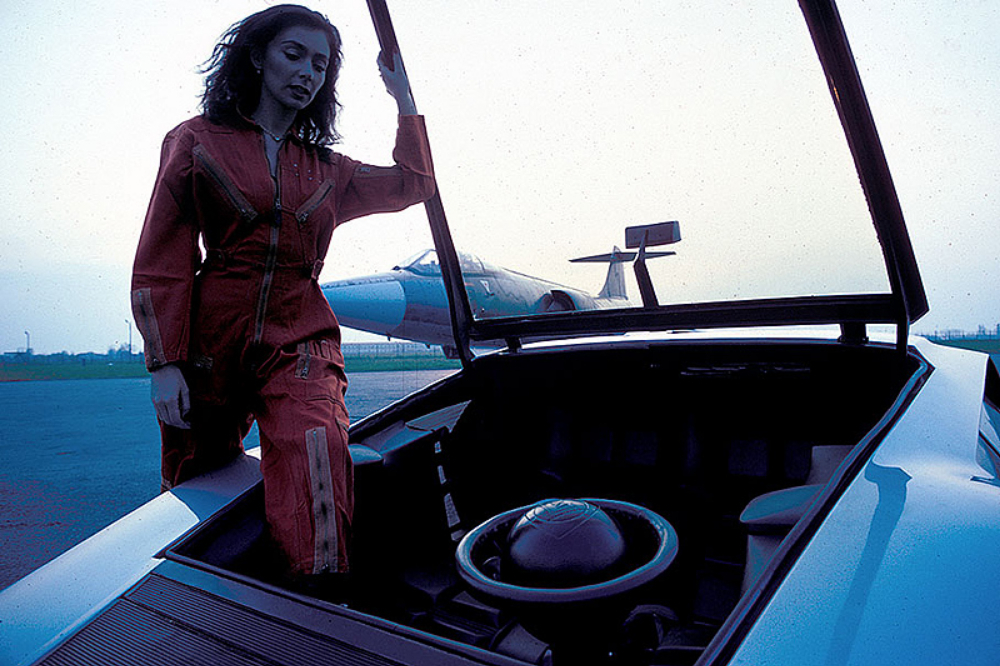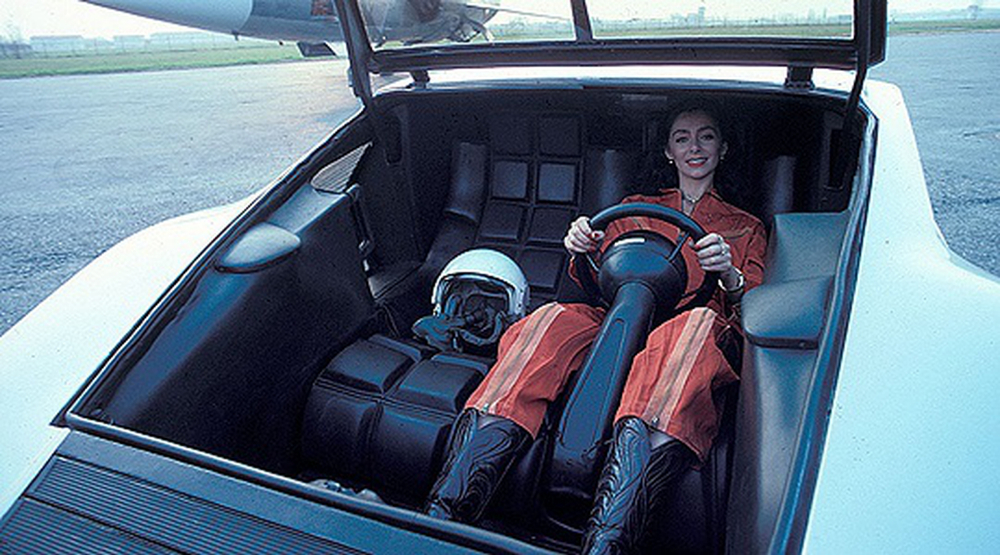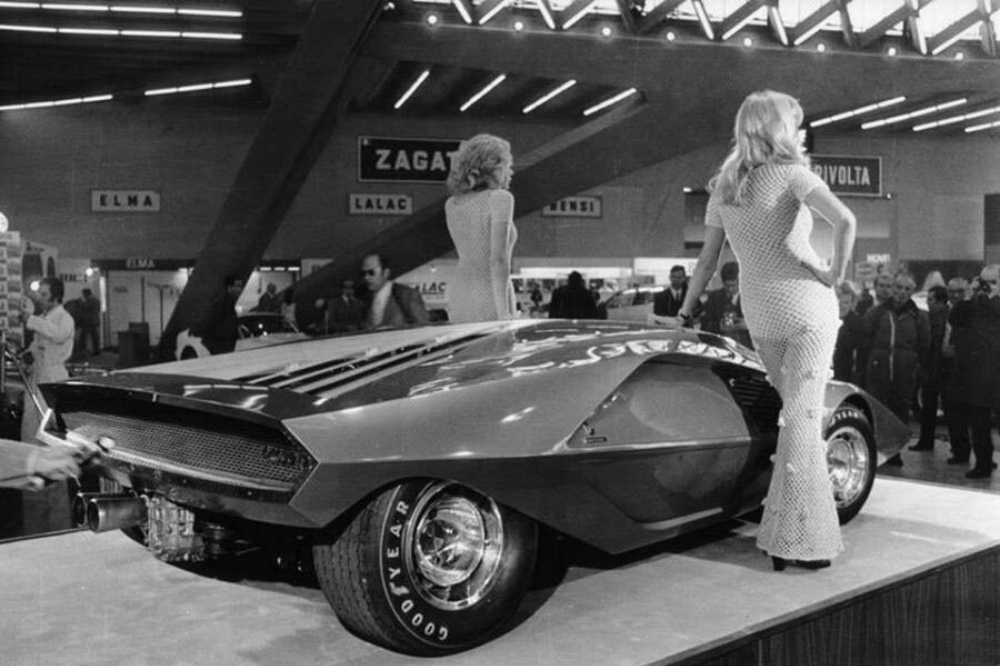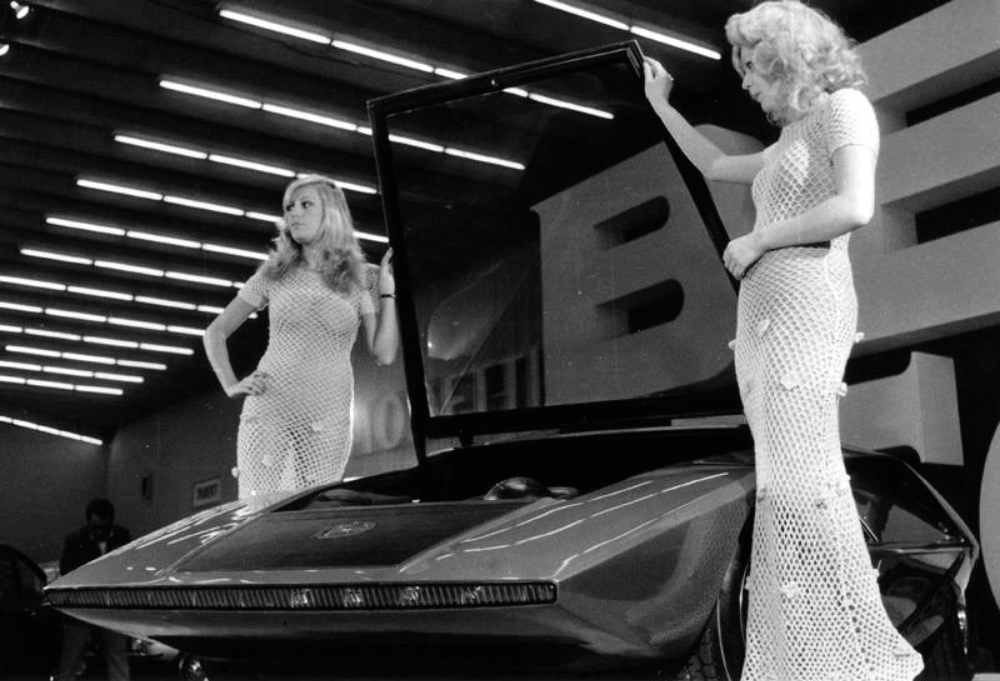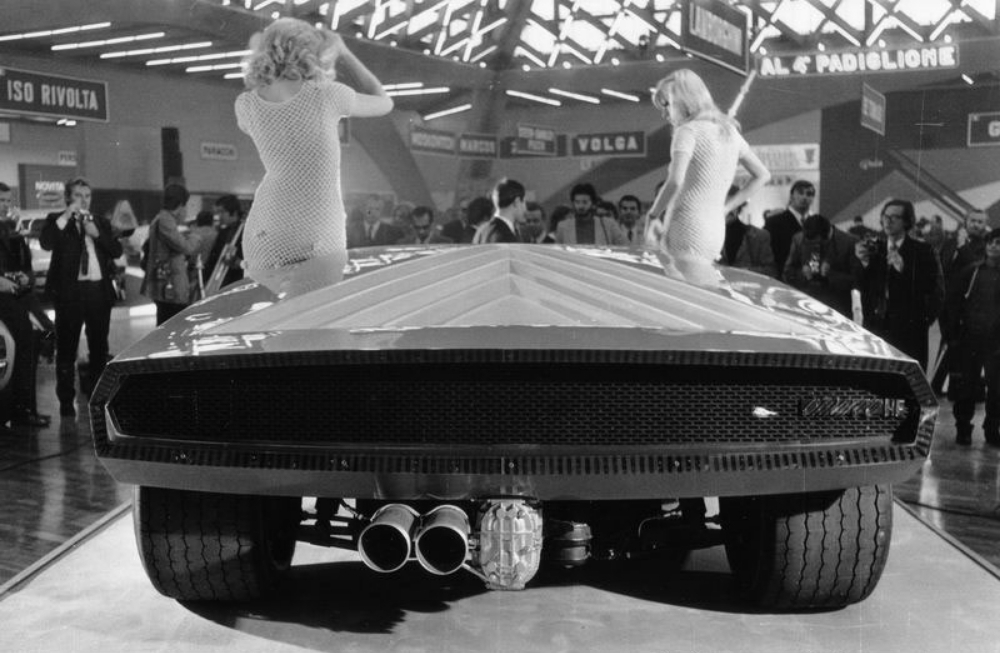Crafted by the genius brain of Marcello Gandini and his team at Bertone, the Stratos Zero isn’t your average ride. Imagine a car so low, it’s almost kissing the ground, and with a wild wedge shape that’s more at home in a sci-fi movie than on the road. But here’s the kicker – it’s not just a pretty face. Hidden under that sleek body is a gutsy powerful engine, hinting at the raw power this beast could unleash. The designers dubbed it “Stratos 0” in homage to the space-age fascination with the stratosphere prevalent at the time. Scuderia Lancia effectively used it for marketing alongside its Lancia Stratos version. The Lancia Stratos, produced from 1973 to 1978, featured a Ferrari Dino 246 GT/GTS 2.4-liter V6 engine, boasting 187 hp and securing multiple world rally championship wins from 1974 to 1976. The concept car was created by Bertone using the chassis of a crashed Lancia Fulvia HF1600 rally car. Its angular trapezoidal ultra-futuristic science fiction design (for its time) styling is ultra-low and aerodynamically shaped, with a height of only 84 centimeters (at 33 inches, it was arguably low enough to be driven right under a semi-trailer). The bodywork is made of fiberglass, with an original copper color scheme, a fastback rear body shape, a retractable steering wheel for easier access to the cockpit, a flip-open front-windshield door, and integrated bucket seats. The instrumentation was on a digital control screen, which was visionary at the time. The Stratos exuded a futuristic appearance in every detail. Sporting a full-width row of ultra-slim headlights at the front, it presented a striking visual. The rear end mirrored this dramatic effect with a minimalist yet highly impactful design—featuring a mesh grille, ribbon tail lights, wide tires, and dual exhausts positioned off to the side of the prominent gearbox case. The front headlight strip glowed with the illumination of ten 55-watt bulbs, while the rear strip dazzled with an array of no fewer than 84 tiny bulbs arranged around the perimeter of the truncated tail. To indicate turns, these same lights would sequentially illuminate from the center to the edges, creating a distinctive and functional lighting feature. The cabin was so far up front that access was by way of a flip-up windscreen, and a sourced hydraulic linkage was devised so that, as the steering column was pushed forward to enable access to the driver’s seat, the windscreen would lift. The black rectangle at the bottom of the windscreen was in fact a small rubber mat intended to make climbing easier by first stepping onto the bodywork. The Lancia badge at the center of the mat cleverly concealed a pivoting handle that popped the windscreen open. Certainly, the seating position was as horizontal and as close to the ground as it could possibly get. With the two occupants sitting between the front wheels, the car could have hardly been any narrower as well. Once seated, the driver had nothing but the road in front of him and the sky above him, with a futuristic instrument panel offset to the side behind the front wheel-arch. Its graphics, hand-etched in the green Perspex, were certainly futuristic looking but probably difficult to concentrate on at any speed. Headroom was adequate for the average-sized driver, but one felt slightly “compressed” with the fully enveloping windscreen closed. The cost of building the Zero was reportedly forty million lire (about $450,000 in 1970). Nuccio Bertone drove the Stratos on public roads to Lancia’s offices, dazzling all who saw the impossibly low coupe, and marveling at it himself when he drove it under the closed entrance barriers at Lancia’s racing department. The concept car was exhibited for a long time at the Bertone museum near Turin. It was sold at auction, among others, at the 2011 Concorso d’Eleganza Villa d’Este elegance competition, and has since been exhibited by its various successive private owners in various elegance competitions and car museums around the world.
(Photo credit: RM Sothby’s / Petersen Automotive Museum / FirstArtMuseum.org / Wikimedia Commons / Pinterest). Notify me of new posts by email.
Δ Subscribe
